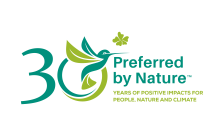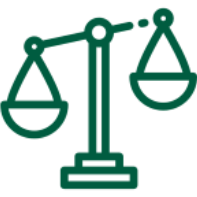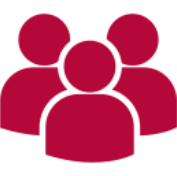The Timber Legality Risk Assessment (in french) contains an evaluation of the risk of illegality in Gabon for five categories and 26 sub-categories of law. We found:
- Specified risk for 22 sub-categories.
- Low risk for 2 sub-categories.
- No legal requirements for 3 sub-categories.
This page provides an overview of the legality risks related to timber produced in Gabon.
Around 85.4% (22,000,000 ha) of Gabon is covered by forests, of which:
- about 65% is primary forest
- about 35% is naturally regenerated forest
- a tiny proportion is plantations (about 30,000 ha).
Half of the country’s forests are production forests. All forests are state-owned and are divided into the Permanent Forest Estate (PFE) and Rural Forest Domain. Timber is the second most important export (after oil); it goes mainly to China and the EU.
Several legality risks are present in Gabon timber supply chains. The risks are wide ranging and appear across all categories of law. If you are sourcing timber from Gabon you should take care to ensure the extensive risks identified are not present in your supply chains, or have been sufficiently mitigated.
Score: 31 / 100 in 2021
Rank: 124 out of 180 countries in 2021
A full ban on exporting logs.
There are currently no armed conflicts in Gabon according to the Council on Foreign Relations' Global Conflict Tracker
VPA status: Negotiating
CITES appendix II: Dalbergia spp., Guibourtia spp.
Information Gathering
Timber sources
- Find out the different sources of legal timber
- Determine which source type your timber comes from
| Timber source type | Description of source type |
|---|---|
|
Convention Provisoire D’Aménagement, D’Exploitation et de Transformation (CPAET) |
Une CPAET est accordée pour une durée maximum de trois ans en vue de l’attribution future d’une CFAD. Elle permet au concessionnaire demandeur d’effectuer dans la zone sollicitée les opérations relatives à l’élaboration du plan d’aménagement et du plan d’industrialisation. De l’exploitation forestière peut avoir lieu pendant cette période. |
|
Concession Forestière sous Aménagement Durable (CFAD) |
Titre attribué à toute personne physique ou morale pour l'exploitation du domaine forestier permanent (hors forêts domaniales classées). Il est conditionné à l’obligation d'aménagement et de transformation locale du bois. |
| Permis Forestier Associé (PFA) |
Le PFA est un permis réservé aux seuls nationaux. Il est délivré pour l'exploitation des forêts du domaine forestier permanent (hors forêts domaniales classées). |
|
Permis de gré à gré (PGG) |
Permis est délivré à des fins de transformation locale aux seuls nationaux dans les forêts du domaine forestier rural. Il concerne l'attribution d'un maximum de 50 pieds d'arbres dans des périmètres préalablement identifiés et matérialisés par l'administration des Eaux et Forêts. Il est individuel et incessible et d’une validité de douze (12) mois à compter de la date de signature. |
|
Autorisations de Coupe de Bois pour le Sciage de Long (ACBSL) |
L’autorisation de coupe de bois est un titre d’exploitation des bois d’un maximum de 15 pieds d’arbre. Elle est individuelle non cessible et d’une validité de deux (2) mois à compter de la date de signature. |
| Autorisation spéciale de coupe (ASC) |
L’autorisation spéciale de coupe (ASC) est un titre d’exploitation forestière spécial, d’un maximum de cinq pieds équivalents à quinze mètres cubes. L’ASC est délivrée dans le domaine forestier rural aux seules personnes physiques de nationalité gabonaise, dans le but de satisfaire les besoins des communautés villageoises riveraines. |
| Forêts Communautaires |
Forêts confiées par l’Etat à une communauté locale. Les forêts communautaires sont sous un aménagement simplifié. |
Risk Assessment
Risk assessment summary
|
Les Droits de Récolte |
|
|
Les Taxes et Frais |
|
|
Les Activités de Récolte du Bois
|
|
|
Les Droits des Tiers |
|
|
Le Commerce et le Transport du Bois |
|
|
La Transformation du Bois
|
|
Risk Mitigation
Mitigate the risks in your supply chain
Learn which actions we recommend to mitigate the risks associated with the timber sources from Gabon.
Source Certified Materials
NEPCon believes that third party certification (for example FSC and PEFC certification) can provide strong assurances of the legality of the products they cover. Companies seeking to mitigate the risks of sourcing illegal timber should seek to purchase third party certified materials wherever possible.
While the European Timber Regulation does not include an automatic “green lane” for certified products, it does recognise the value of certification as a tool for risk assessment and mitigation. The European Commission says that companies “may rate credibly certified products as having negligible risk of being illegal, i.e. suitable for placing on the market with no further risk mitigation measures, provided that the rest of the information gathered and the replies to the risk assessment questions do not contradict such a conclusion.”
For more information on using certified materials in your due diligence, including how to assess whether a certification system meets EUTR requirements, see the page on Certification and Due Diligence.
Mitigation recommendations
There are five recommended actions to mitigate the risks associated with timber sources from Gabon:
1. Fully map your supply chain
- Our supply chain mapping tool can help you do this.
2. Obtain and verify documents
- Forest level documents
- Processing licence, obtained after submitting a complete industrialisation plan
- The register of companies
- Valid company registration documents
- Harvesting inventories
- The management and annual logging plans
- Maps showing the areas of logging
- Environmental and/or social impact analysis
- Compliance notice from the Minister responsible for the Environment
- For permanent domain licences:
- CFAD and PFA; Report on the opening of the concession’s boundaries; Letter approving the Annual Operations Plan (Plan Annuel d’Opérations) (PAO); Approved inventory protocol; Letter approving the management plan; Maps proposing the subdivision of the permit; Geo-referenced numerical data; Forestry inventory report; Site log books; Monitoring function report; Triage map; Cumulative state of volumes exploited in the annual operation area (AAC)
- For rural domain licences:
- For PGGs: Site log books; Map showing the positioning of trees; Geo-referenced numerical data; Tree-marking report
- For ACBSLs: Map showing the positioning of trees; Geo-referenced numerical data; Tree-marking report; receipts for payments of fees related to harvesting, taxes, logging costs and other fees. The volumes, species and qualities indicated on the sales and transport documents must correspond with the fees and costs paid.
- For permanent domain licences:
- Tax related documents
- Receipts for the payment of sales taxes
- Tax declaration
- Taxpayer account
- Monthly production declaration
- Receipt for payment of taxes
- Employment related documents
- Competency certificates
- Official salary declarations
- Trade and transport documents
- Sales documents
- Customs declarations
- Trade permits
- Transport documents
- Annual Tax Returns (DSF)
- Import and export permits and certificates
- Government issued receipts of payment of all taxes
3. Consult stakeholders
- Neighbours, local communities and others confirm that land rights are clear
- Interested parties confirm that the legal status of the forestry operation or the right to carry out activities is not subject to court orders or other legal decisions established in order to bring operations to an end
- Authorities confirm the validity of the logging permit(s) and confirm that the attribution of the logging title has been published
- Stakeholders confirm the awarding of legal rights and registrations such as a concession must have been the subject of a public disclosure
- Stakeholders (rural communities, Water and Forests Administrations, Land Administrations, private operators) confirm that the customary rights are respected during harvesting activities being carried out
- Tax authorities confirm that the operation is up-to-date with payment of all applicable costs
- Staff and contractors confirm that:
- The protective equipment required by law is provided by the organisation
- Staff representatives are named and the freedom of union activity is guaranteed
- People involved in harvesting activities must be employed under a formal contract
- People involved in harvesting activities are covered by the obligatory insurance
- The legally established basic salaries are paid to staff involved in harvesting activities
4. Carry out on-site verification
- Confirm that the information regarding the area, the species, the volumes and other information contained in the harvesting permit are correct and within the limits prescribed by the law
- Confirm that maps correspond with reality, and harvesting boundaries are clearly marked
- Confirm that the content of logging plans is respected on the ground:
- No harvest timber in areas where harvesting is forbidden
- Only harvests permitted forest species are harvested
- The content of the management plan is respected on the ground
- Legal procedures established to manage and protect endangered species or those that are under threat in the forestry unit are respected
- Regulations concerning the protection of nature such as protected areas, fallow lands, protected species and rules regarding hunting are respected
- Environmental constraints are respected in the field, such as the requirements linked to soil damage, buffer zones, retention trees, seasonal restrictions, etc.
- The management of chemical products and of non-organic waste meet legal requirements
- Health and safety at work requirements are observed in the field during logging activities
- The minimum age is observed for all staff involved in harvesting activities and in dangerous jobs
- Confirm that your material matches that on invoices
5. Conduct targeted timber testing
- Conduct timber testing on samples of purchasd material to verify the species or origin of timber, where appropriate















